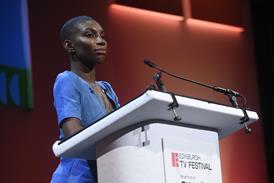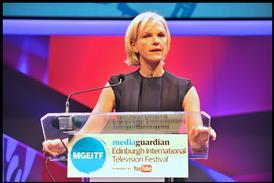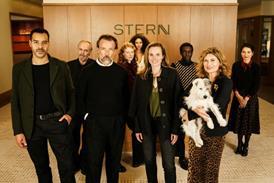The development follows a meeting held at sound post house Grand Central on Wednesday 11 June.
At the meeting Grand Central director of sound engineering Raja Sehgal (pictured, right) demonstrated how measuring sound though a DK Technologies MSD600M loudness meter incorporating an ITU algorithm can maintain sound levels on advertisements at a level that complies with a recent British Code of Advertising Practice directive.
The directive was issued following a number of complaints from viewers regarding perceived loudness of commercials. It comes into force on 7 July and states that sound levels in advertisements either need to conform to 4.5 on the Peak Program Meter (PPM) scale or recommends that a loudness meter measures sound using ITU specification 1770/1771.
Although the Grand Central demonstration was largely advertising focused, it also aimed to show broadcasters that content outside adverts, such as live announcements and channel idents, could also be measured using loudness meters incorporating the ITU algorithm.
Sehgal said: “Advertising can sound loud if it is set against too-quiet idents, promos and programming and similarly if the idents, promos and programming between the ads is too loud, advertisers will complain that their ads are too quiet. Considering the loudness profile of the entire channel will be the best way to avoid complaints in the future.”
As a result of the meeting, broadcasters including BSkyB, ITV, Channel 4, IMD, Turner, MTV and the BBC agreed to consider using loudness meters incorporating the ITU algorithm to measure perceived noise levels in advertising instead of the current industry standard PPM or the loudness meters currently in use.
Turning sound down, as the 4.5PPM level requires, does not mean it is necessarily perceived as quieter. Similarly old Chromatech loudness meters currently used by C4 and ITV discriminate against mid-range frequencies which are often pleasant to the ear.
However, a loudness meter incorporating an ITU algorithm measures perceived loudness in a way that mimics the ear and does not discriminate as much against mid-range frequencies.
The ITU algorithm is currently being incorporated into loudness meters made by DK Audio, RTW, Dolby and Chromatech giving broadcasters and sound post-production companies a range of loudness meters to choose from. For existing users, software updates are becoming available from certain manufacturers.
Sehgal added: “The broadcasters may be willing to change their practices, but they need to be assured that the new measurement technology would not greatly affect their output.”
An industry insider said: “Sehgal is demonstrating that evenness in broadcasters' sound output is something that should be addressed and he's doing a really good job.”


























No comments yet